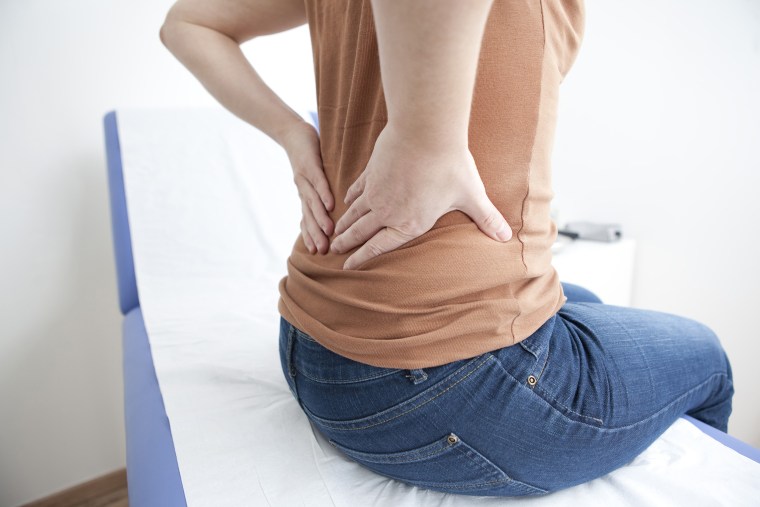Nearly everyone experiences lower back pain at some point. For most, the pain goes away on its own.
But for 20 percent of patients, back pain lingers for a year or more. It's the second most common cause of disability in the U.S, according to the National Institutes of Health.
A group of researchers from Sapienza University in Italy believe they have found a solution to at least one form of debilitating back discomfort after their tests left the majority patients free of pain.
Related: Sore back? Try heat and exercise first, guidelines say
Participants in the eighty person study reported suffering from back pain for 3 months; exercise or medication didn't relieve symptoms. Their particular diagnosis was herniated disc — a sometimes painful condition where the rubbery cushion between vertebrae becomes displaced, irritating nearby nerves.
The group underwent a minimally invasive procedure, CT-guided pulsed radiofrequency, in which a probe was inserted and an electrical current delivered to the area for ten minutes.
"The probe delivers a gentle electrical energy, so there's no thermal damage," said Dr. Alessandro Napoli, lead author of the study. "Following this treatment, inflammation and pain go away. With relaxation of the muscles, the distance between the vertebrae returns."
Of the 80 patients treated, 81 percent were pain free one year after a single 10-minute treatment session. Six patients required a second pulsed radiofrequency session. Ninety percent of the patients were able to avoid surgical treatment.
“Altering the electric field changes nerve root conduction which can have a long standing effect, as we see in this report," said Dr. Jacqueline Bello, chief of neuroradiology at Montefiore Medical Center, New York.
But many experts say the technology used in the Italian study needs more research and radiofrequency therapy shouldn't be used on its own.
“The origin of back pain is complex and for most people it resolves on its own," said Dr. Alexios Carayannopoulos Medical Director of the Comprehensive Spine Center and Division Director of Pain and Rehabilitation Medicine at Rhode Island Hospital. “Radiofreqeuncy technology should be used within a multidisciplinary paradigm in conjunction with physical therapy, yoga, non-opioid medication, and chiropractic medicine.”
The study also failed to measure patients against a control — a group of patients who received no treatment at all — so it is impossible to tell whether the pain relief was from the treatment or if it resolved on its own.
"We don’t know what would have happened if compared to nothing or sham," said Dr. Seth Waldman, director of pain management at the Hospital for Special Surgery. "More research needs to be done in a randomized control trial.”
Related: ‘Cool’ new knee procedure eases arthritis pain without surgery
When back pain strikes, the first instinct typically is to avoid physical activity and retreat to the couch until the pain subsides. But many doctors believe this is the worst thing for the condition. In fact, not only do doctors believe that people who experience back pain should remain active but they also believe that non-surgical methods can be effective.
In a 2016 review of the research on exercise for chronic nonspecific low back pain, researchers found that aerobic exercise, improving flexibility of the lumbar spine and hamstrings and strengthening the body's core significantly reduced lower back pain for most patients.
“It’s important to emphasize exercise, stretching, proper posture, ergonomics, maintaining a healthy weight, and balance of activities to keep your back healthy,” said Carayannopolous.
